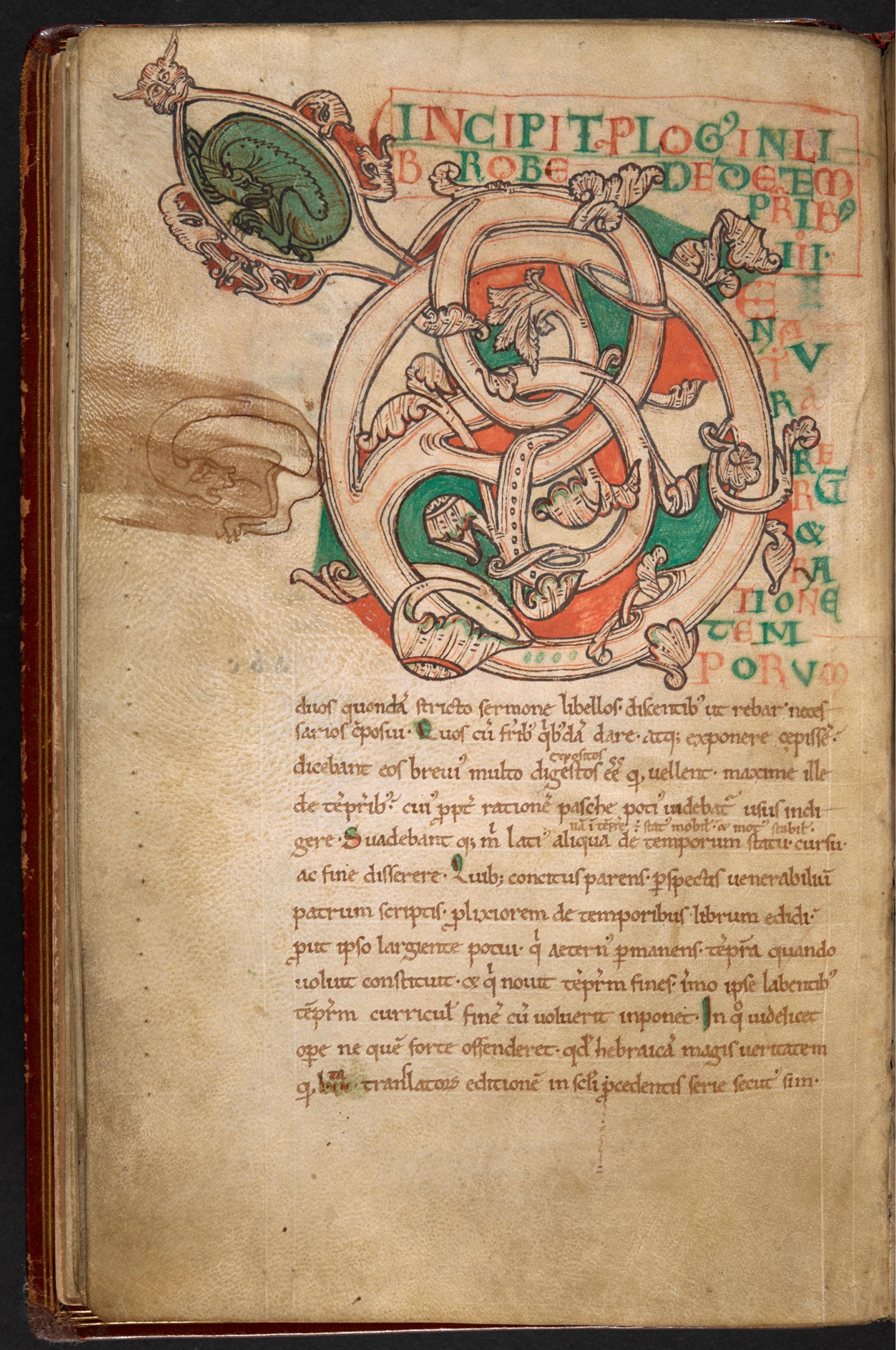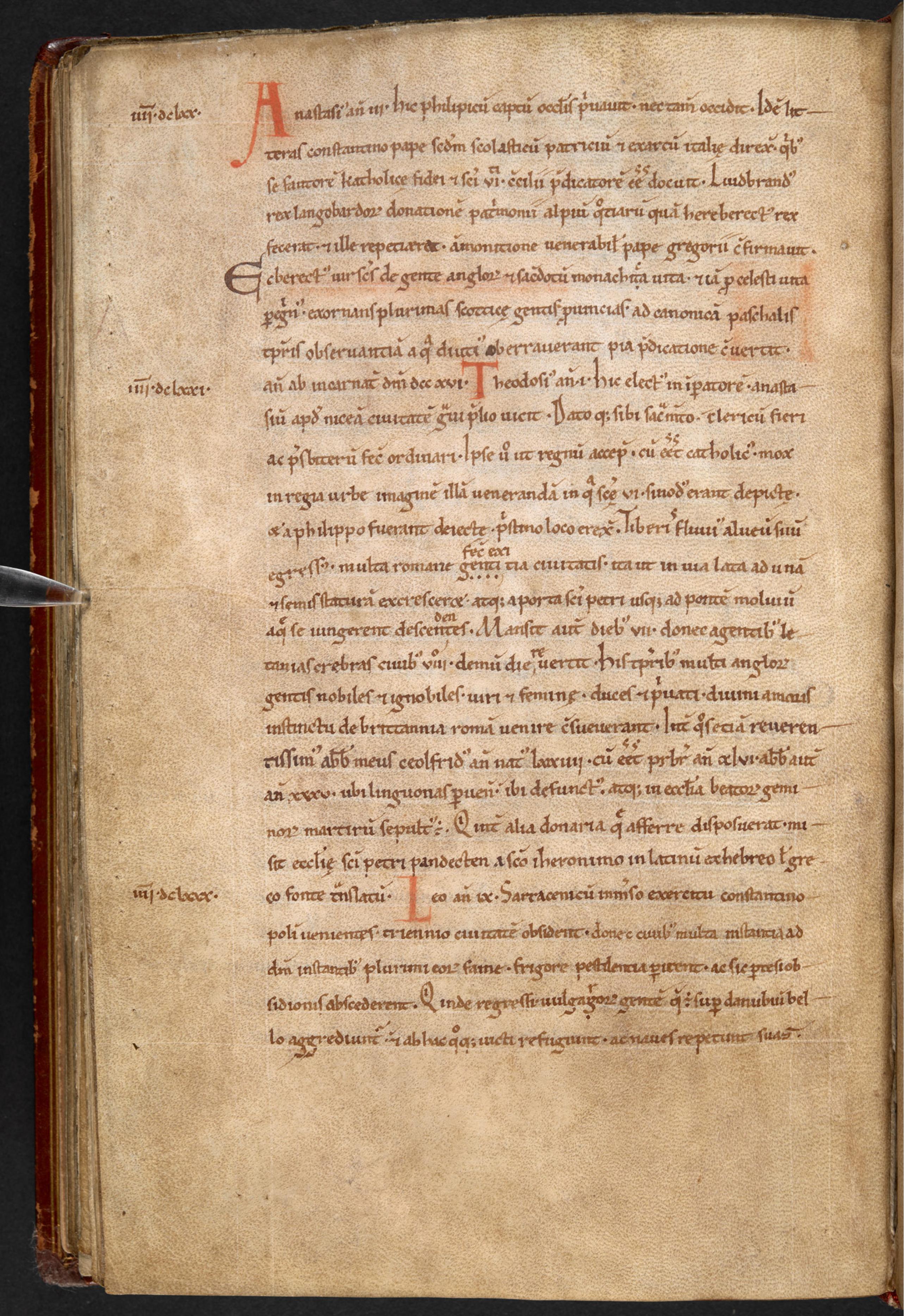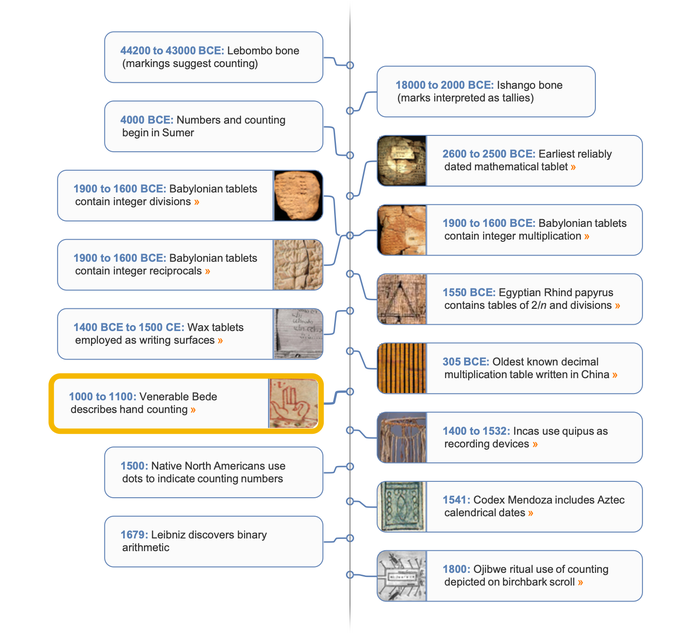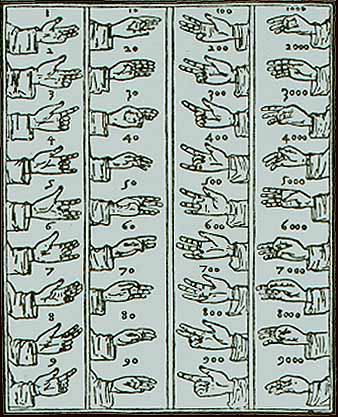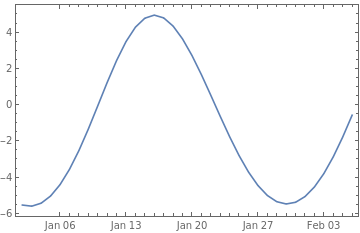1000–1100 CE
Venerable Bede's De temporum ratione
From finger counting to astronomical time calculation
The Venerable Bede was an English Benedictine monk who lived from 672/3–735 CE. Bede produced a large number of works on subjects as varied as science, music, poetry, biblical commentary and history. As a result, he is widely regarded as one of the greatest scholars of the Anglo-Saxon period—as well as the father of English history. Around 703, Bede wrote De temporibus (On Time), which provided an introduction to the principles of calculating the date of Easter, together with a companion piece De natura rerum (On the Nature of Things), which described the cosmological assumptions underlying Bede's philosophy. Bede's major astronomical work De temporum ratione (On the Reckoning of Time) was written in 725. It included discussions covering the changing length of daylight, the seasonal motion of the Sun and Moon, and many other topics.

Excerpts from De temporum ratione and other influential works of the period were copied and shared around European scriptoriums (writing workshops) as a means of sharing and preserving information. Scribes would copy and sometimes add commentary in the margins, while illuminators would provide illustrative decoration. Medieval manuscripts often combined texts from various authors into a single binding for a bound manuscript, as in the case of British Library Royal MS 13, whose illustrations are featured here. In the first chapter of De temporum ratione, entitled "Calculating or speaking with the fingers," Bede described a form of finger counting. This practice dates back centuries, with different variations used by a variety of disparate cultures. In the British Library manuscript designated Royal MS 13, an illuminator has given the reader a diagram for understanding Bede's description of how ancient Romans counted to 1,000 using only their hands and fingers. This Roman system of counting remained in use for centuries and can also be seen in Luca Pacioli's Summa de arithmetica from 1494. The remaining chapters of Bede's work include astronomical and temporal discussions, including chapter 26, entitled "Why the Moon, though Situated beneath the Sun, Sometimes Appears to Be above It," in which Bede uses evagation to explain apparent variations in the altitude of the Moon.
